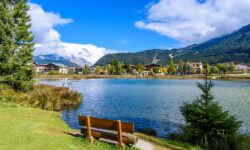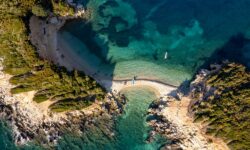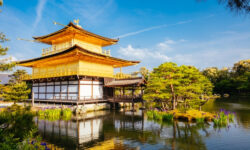How Rising Seas are Forcing Relocation of an Island Community

Image Name: San Blas Island
Set off the northern coast of Panama in the San Blas archipelago lies the tiny Caribbean island of Gardi Sugdub. Home to nearly 1,300 members of the Indigenous Guna community, this 400m-by-150m island has been a refuge for the Guna people for over a century. However, rising sea levels and environmental changes now threaten the very existence of Gardi Sugdub, making it one of the most significant disappearing islands in the Americas.
A History Rooted in Survival
Resilience runs deep among the Guna people. Along with a length of shoreline in the modern Guna Yala autonomous area, they settled on a group of 49 islands including Gardi Sugdub following the Spanish colonization in the early 1500s. Since their culture, language, and customs are so closely entwined with the surroundings, the Guna have a great bond to their land. Still, the link between the people and the water that formerly supported their way of life is now seriously threatened.
The Imminent Threat of Rising Sea Levels
Since the 1990s, the people who live on Gardi Sugdub have seen their island slowly being taken over by the sea. It is rising at a faster rate than it did in the 1960s—more than twice as fast as now (3.4 mm per year). The threat is clear because most of the islands where Guna live are only 0.5 to 1 m above sea level. According to experts, all of the islands in the San Blas group might have to be left behind by the year 2100. The people who live in Gardi Sugdub are already getting ready for this terrible truth.
The Guna’s Plan for Survival
People in Gardi Sugdub have come up with a plan, which is different from other towns that are dealing with the effects of climate change. Leaders of the island started working with the Panamanian government in 2010 to create a new mainland town known as Isber Yala. The new community, set several kilometers from the ocean, is designed to offer a safe haven for the Guna people. Instead of the densely packed wooden and metal houses of Gardi Sugdub, Isber Yala will consist of prefabricated concrete homes. Families are scheduled to begin relocating in February 2024, making the Guna among the first climate refugees in the Americas.
The Cultural Impact of Relocation
Leaving Gardi Sugdub represents a major cultural change for the Guna people, not only a change of address. Their cultural identity is closely entwined with their surroundings, which include the magnificent mola clothing legacy and the craft of building dugout canoes for fishing. The Guna people will have to modify significantly to live a life free from the water, hence the migration to Isber Yala will provide challenges. According to community leader Blas López, this change will have a major impact on their culture and call for their adaptation to a new way of life in a foreign environment.
 Image Name: Relocating from San Blas
Image Name: Relocating from San Blas
The Struggle to Maintain Tradition
Despite outside pressures, the Guna have battled hard to keep their customs intact. The Guna were split and faced a drive to fit them into Panamanian society when Panama acquired freedom from Colombia in 1903. This finally resulted in the Dule Revolution of 1925, in which the Guna effectively opposed forced assimilation while preserving their language, attire, and customs. Today, the Guna’s autonomy is represented by the saila, a political and religious leader who oversees each village from a Congress House. This institution is crucial to the Guna’s cultural identity, serving as a place where ancestral knowledge is passed down and harmony with nature is taught.
A Different Approach to Living
Many islanders have turned to tourism as a means of income as growing sea levels and overcrowding make living on Gardi Sugdub progressively intolerable. With some people driving guests from the mainland to the islands and others running little eateries and hotels, tourism has grown to be a major component of the local economy. Gardi Sugdub features even a small museum honoring Guna culture. But this way of life is also threatened by the degradation of surrounding coral reefs and the difficulties brought about by increasing sea levels.
The Environmental Price
Rising sea levels alone cannot explain Gardi Sugdub’s environmental degradation. Using a technique known as “filling,” whereby coral reefs, trash, boulders, and cement blocks were utilized to create new land, the island’s size has been artificially enlarged over the years. This destroyed the coral reefs that shielded the island from storms even while it helped provide more room for the expanding population. Furthermore, the absence of a suitable sewage system has resulted in bad sanitary conditions, therefore aggravating the problems experienced by the people living on the island.
The Variable Future of Isber Yala
Concerns regarding the long-term viability of the new community linger even as the Guna get ready to move to Isber Yala. Though issues regarding access to clean water, sanitation, and other facilities remain, Isber Yala’s three hundred dwellings are projected to be finished in February 2024. The Guna residents are cautious about what the future holds even if the new community provides safer surroundings with prefabricated homes furnished with electricity and access to pure drinking water. Schoolteacher Dalys Morris of Gardi Sugdub voiced uncertainty about whether moving to the mainland would be a long-term fix since eventually, rising sea levels could also endanger Isber Yala.
Conclusion
The narrative of Gardi Sugdub reminds us sharply of the reality of climate change and how it affects underprivileged areas. The Guna people’s path from Gardi Sugdub to Isber Yala marks both loss and resiliency as one of the earliest climate refugee populations in the Americas. The difficulties of maintaining their cultural identity and adjusting to a new way of life still exist even if moving to the mainland provides a short fix. Think about the wider consequences of growing sea levels and the need to help societies like the Guna negotiate an uncertain future as you study the narrative of Gardi Sugdub.



